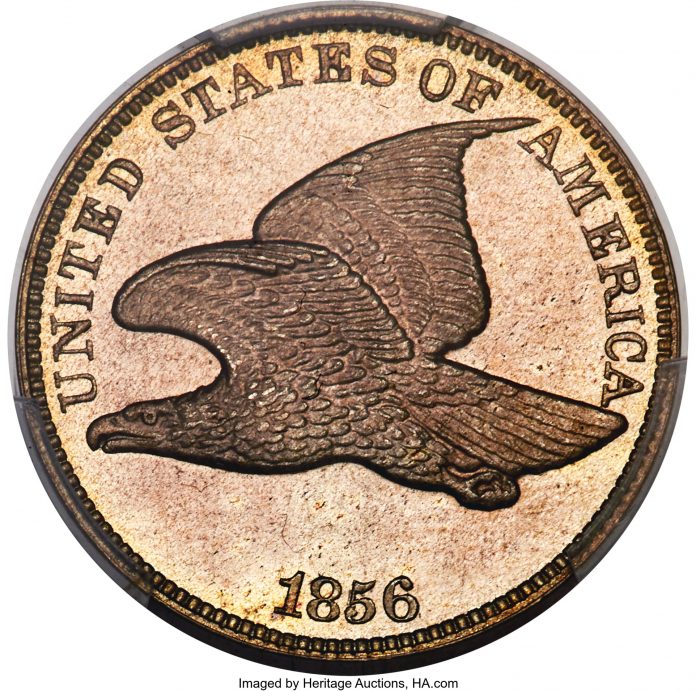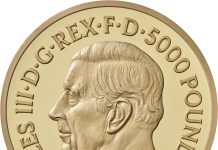
One of the great 19th-century rarities is the 1856 Flying Eagle cent. Technically a pattern coin that served as the prototype for today’s small-cent, the 1856 Flying Eagle cent represents the end of the large cents and beginning of a new era for American “pennies.” The 1856 Flying Eagle cent was designed by James B. Longacre and was struck to demonstrate to members of Congress what a new small-sized cent would look like. The small cent was authorized by the Coin Act of February 21, 1857, and production of regular-issue Flying Eagle cents began that year.
There are no hard mintage records telling collectors exactly how many 1856 Flying Eagle cents were made, though estimates range from between 2,000 and 3,000 pieces. A small number of proofs were also made for collectors. As the 1856 Flying Eagle cent isn’t technically an official regular issue, it isn’t necessary for a completing a basic set of Flying Eagle cents — a short series often collected alongside Indian Head cents.
Still, the 1856 Flying Eagle cent has long been popular with coin collectors and is often collected by those with pockets deep enough. Even well-circulated examples typically trade in the range of $5,000 to $10,000. Proof examples fetch about $18,000 and up. Always be wary when buying any 1856 Flying Eagle penny, as so many counterfeits and altered dates exist. It’s wisest to buy 1856 cents that have been certified by one of the major third-party coin grading firms.















